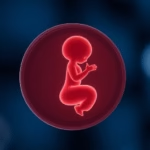Understanding Intrauterine Pregnancy
Today we will be talking about intrauterine pregnancy. This term refers to a pregnancy that occurs within the uterus, which is the normal site for fetal development during gestation. An intrauterine pregnancy is typically confirmed via ultrasound, where a gestational sac, yolk sac, and embryo can be identified in the uterine cavity. This is distinct from ectopic pregnancies, where the fertilized egg implants outside the uterus, often in the fallopian tubes. Intrauterine pregnancy is crucial because it indicates a viable pregnancy, whereas ectopic pregnancies can lead to serious health risks for the mother if not identified and treated promptly. Understanding the various aspects of intrauterine pregnancies, their development, and the associated health care aspects is essential for prospective parents and healthcare providers alike.
1. What is Intrauterine Pregnancy?
An intrauterine pregnancy (IUP) is defined as the implantation of a fertilized egg within the uterine cavity. This means that after fertilization, when the sperm and egg unite, the resulting zygote travels down the fallopian tube and lodges itself into the lining of the uterus. This is where it will develop into an embryo and later a fetus. The uterine environment provides the necessary nutrients and protection that support the embryonic and fetal development throughout pregnancy.
The confirmation of an intrauterine pregnancy is typically achieved through ultrasound examinations, which may display the gestational sac as early as four to five weeks after the last menstrual period, with the embryo usually visible by six weeks. A healthy intrauterine pregnancy is characterized by normal growth and lack of complications. Monitoring is crucial as any signs of potential issues, like abnormal bleeding or severe abdominal pain, may indicate irregularities such as ectopic pregnancy or miscarriage.
2. Signs and Symptoms of Intrauterine Pregnancy
When someone is pregnant, their body undergoes a multitude of changes. The signs and symptoms of an intrauterine pregnancy can help confirm this life-changing experience. Common early signs include missed menstrual periods, nausea or morning sickness, breast tenderness, and increased fatigue. Some women may notice changes in their appetite or heightened sense of smell. These signs are caused by hormonal changes as the body prepares to nurture the growing fetus.
As the pregnancy progresses, symptoms may vary significantly. For instance, many women experience an increase in abdominal size, which is a natural indicator of the growing fetus. Some women might also go through mood swings due to hormonal fluctuations. Additionally, ultrasounds conducted in the early stages of pregnancy help visualize these symptoms, providing clarity and reassurance. Monitoring these signs ensures that any concerns regarding the health of both mother and baby can be swiftly addressed.
3. Ultrasound and Its Role in Confirming Intrauterine Pregnancy
Ultrasound technology plays a vital role in confirming intrauterine pregnancies. This imaging technique utilizes sound waves to create visual representations of internal structures. For pregnant women, early ultrasounds are primarily used to confirm the location of the pregnancy—ensuring it is indeed intrauterine. With a transvaginal ultrasound, healthcare providers can detect as early as four to five weeks gestation.
Ultrasounds also allow for monitoring fetal growth, determining heart rate, and evaluating anatomical development. As pregnancy progresses, ultrasounds become essential for assessing placental positioning and the amount of amniotic fluid. They can also detect multiple pregnancies (twins or triplets). Routine ultrasounds improve prenatal care, help set expectations, and provide vital information regarding the well-being of both the mother and the fetus.
4. Risks and Complications of Intrauterine Pregnancy
While many intrauterine pregnancies proceed without complications, certain risks may arise. Some potential complications include gestational diabetes, preeclampsia, and placenta previa. It’s essential for healthcare providers to closely monitor any existing health issues and identify potential risks early in the pregnancy.
Pregnancy can also lead to ectopic pregnancy, where the embryo implants outside the uterine cavity, usually in the fallopian tubes. This condition can arise due to various factors, including previous pelvic inflammatory disease (PID) or certain contraceptive methods. Symptoms such as sharp abdominal pain or heavy bleeding may indicate complications and necessitate immediate medical evaluation. Early intervention can ensure better outcomes and minimal risks for the mother.
5. Nutrition and Emotional Well-being During Intrauterine Pregnancy
The health of both the mother and the growing fetus greatly relies on nutrition. A balanced diet rich in vitamins and minerals is crucial during pregnancy. Essential nutrients such as folic acid can help prevent neural tube defects, while calcium and iron support fetal development and maternal health. Proper hydration is equally important, ensuring the body functions well and reducing risks of complications.
Equally important is mental health during pregnancy. Many women experience anxiety, mood swings, or prenatal depression. Managing emotional well-being through self-care practices, counseling, and a robust support network is essential. Staying connected with friends, family, or support groups can aid in alleviating emotional distress during this transformative period. Routine prenatal appointments and open communication with healthcare providers can further promote both physical and emotional well-being.
6. Preparing for Labor and Delivery
As the pregnancy progresses, preparing for labor and delivery becomes paramount. Expectant parents should familiarize themselves with what to expect during the different stages of labor. Understanding the signs of approaching labor, including contractions and water breaking, is vital. Setting a birth plan can also help communicate preferences with healthcare providers.
Childbirth education classes provide invaluable information regarding delivery options, pain management strategies, and newborn care. Whether choosing natural childbirth, epidurals, or C-sections, being well-informed allows parents to make confident decisions. Afterward, discussing postnatal care and recovery with healthcare providers ensures comprehensive support for both mother and baby.
7. Postpartum Care after Intrauterine Pregnancy
Following the delivery of a baby, postpartum care is crucial for the mother’s recovery and transition into motherhood. Physical recovery may include monitoring for signs of excessive bleeding, proper perineal care, and addressing any surgical wounds if applicable. Healthcare providers typically assess the mother’s health during routine check-ups and advise on contraception and family planning.
Moreover, emotional support during this period is essential. Many mothers experience a mixture of joy and overwhelming feelings; postpartum depression can occur and require professional treatment. Connecting with local support groups, mental health professionals, and family members can foster a more comfortable transition into motherhood. One-on-one discussions with healthcare providers can address individual concerns as they arise.
8. Family Planning After Intrauterine Pregnancy
Family planning post-delivery is an essential aspect of reproductive health. Couples may want to discuss spacing future pregnancies and explore suitable contraceptive options. Healthcare providers can guide this discussion, considering individual health conditions and family goals.
Understanding fertility cycles can also help parents plan for future pregnancies. Postpartum women can experience altered cycles or delayed return of fertility due to breastfeeding. Engaging in an open dialogue with healthcare providers ensures informed decisions about family planning and managing desires for future children.
9. Common Myths about Intrauterine Pregnancy
Various myths circulate around pregnancy, leading to misinformation. For example, many believe that if pregnant, women should avoid any form of exercise, which is inaccurate. Generally, safe physical activities can benefit both mother and baby, as long as they’re approved by a healthcare provider. Another myth suggests that pregnant women cannot enjoy intimacy with their partners, but normal sexual activity is often safe unless otherwise advised by a doctor.
Education on common pregnancy myths empowers prospective parents, helping them to build healthy habits and address concerns. Consulting reliable sources and healthcare providers is essential for debunking misconceptions and ensuring a positive pregnancy experience.
10. Resources for Expectant Parents
Numerous resources exist to support expectant parents throughout their journey. Educational websites, books, and parenting classes provide crucial information regarding pregnancy, childbirth, and parenting skills. Online support groups and forums foster connections with others experiencing similar journeys, creating a sense of community.
Furthermore, local clinics and hospitals often offer workshops, prenatal classes, and lactation consultations. Connecting with healthcare providers ensures access to a wealth of information and resources tailored to individual needs. Engaging actively in these resources can help parents develop confidence and preparedness for welcoming their newborn.
Conclusion
Intrauterine pregnancy signifies a miraculous journey that begins with the fertilization of an egg and culminates in childbirth. Understanding its many aspects—from confirmation through ultrasound to the nutritional and emotional needs of the mother—helps build a foundation for a healthy pregnancy. Parents are encouraged to seek education on the signs and symptoms of pregnancy, embrace healthy lifestyle practices, and foster a supportive network for emotional well-being.
By preparing for labor and addressing postpartum care, parents can ensure a smoother transition into parenthood. Addressing common myths and focusing on family planning provides a solid framework for future pregnancies. With the wealth of resources available, expectant parents can navigate their journey with confidence. Intrauterine pregnancy represents hope and life; celebrating it involves embracing the joys, challenges, knowledge, and connections found along the way.
Frequently Asked Questions
1. What are the signs of an intrauterine pregnancy?
Common signs include missed periods, nausea, breast tenderness, and fatigue. Ultrasound confirms the pregnancy location.
2. Can you have an intrauterine pregnancy with discomfort?
Some discomfort can be normal, but severe pain or heavy bleeding may indicate complications needing immediate medical attention.
3. What nutrients are essential during an intrauterine pregnancy?
Key nutrients include folic acid, iron, calcium, and DHA, promoting fetal development and maternal health.
4. How can I prepare for labor and delivery?
Education, setting a birth plan, and discussing options with healthcare providers help in preparation for labor and delivery.
5. What are some common myths about pregnancy?
Many myths suggest you should avoid exercise or intimacy during pregnancy. Generally, safe, moderate activity is encouraged, but always consult a doctor.
Further Reading
3.5 tog sleeping bag temperature guide
What Type of Psychotherapy Is Best for Anxiety?







